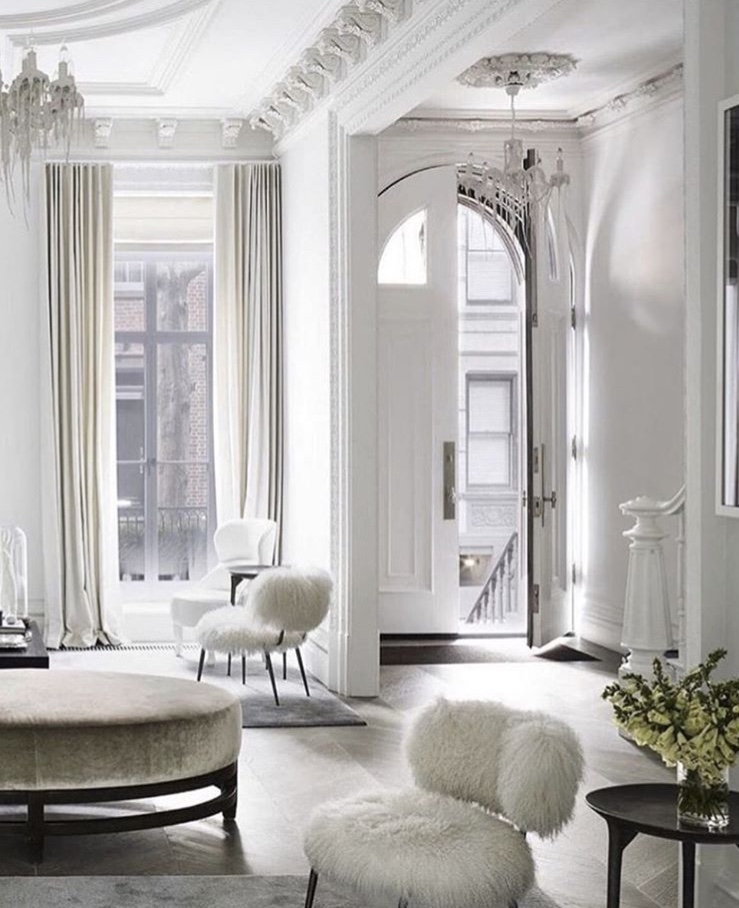What is Atmosphere in an Interior Space?
Image source Instagram
Introduction. Purpose of the blog
The term "atmosphere" has been used in the meteorological field and refers to the earth's envelope of air. It is only since the eighteenth century atmosphere started to be used as a metaphor for describing moods which are 'in the air' - an emotional tinge of an interior space.
It is a first language we learn before words - a language combined of a range of sensual and spatial experiences - we sense where we are through feeling of our own presence and moods, we sense what kind of space surround us - we sense its atmosphere. Western architecture usually develops from perspective with the building as an object to be looked at, while Chinese architecture develops from the idea that the building is something to be experienced from within.
Atmosphere is an architectural quality. My favourite architect Peter Zumthor manages to describe in a very simple way - it is a quality "....when you experience a building and it gets you. It sticks in your memory and your feeling.... when a building manages to move you. I call this atmosphere." Atmospheres are feelings poured out into a space - a building with a soul. It is for sure not things, but 'almost things. It does not exist as entity and is perceived only in subjective experience where we can discuss with each other in intersubjective way what kind of atmosphere we feel in the room.
To perceive atmosphere in the pre-dimensional space mostly means being touched by it through our body. Architectural space acts as multi - sensorial experience, because of our ability to measure qualities of matter, space and scale by our eyes, ears, nose, muscle, skin, tongue and skeleton. German philosopher Gernot Bohme in his essay Atmosphere as the Subject Matter of Architecture (2005) states that "...we must be physically present" to experience 'mood' of a space entirely. This is something personal.
By inhabiting an interior space, individuals can sense its atmosphere that surrounds them. When we enter into the hotel room, a restaurant or any other place, a particular atmosphere is present and it makes us to say ' it feels so comfortable here' or that we feel like 'home' or 'out of of place'. We feel that atmosphere at lunch time in a coffee shop is different than the one at the dinner time in a restaurant; that inside an old classic car there is sense of history; that "...to paint the walls means essentially to change the atmosphere of the room, that to have coffee together creates an atmosphere of intimacy and sociality, that a drink seems taste better in a dark and dimly lit bar " - says italian philosopher Tonino Griffero (Atmospheres: Aesthetics of Emotional Spaces). We count on atmosphere even though we cannot define it. We feel something is there in a space, but not physical; not things, but 'almost - things' or emotions poured out spatially that move the felt (not the material) body.
So what are these elements which create an atmosphere?
Materiality. If we would look around in the place where we are sitting now, it probably contains a great collection of world's available materials which are combined together, react with one another and compliment each other by creating unique compositions. It can add warmth, coldness, a pleasant texture to touch and evoke our feelings.
Light. It is clear that without natural light source life could not exist therefore the relationship between light and architecture occurs undoubtedly. Its function is to create brightness, an atmosphere in which the space exists; it varies the space, gives characteristic mood and makes an effect on its totality. If it is used in a clever way, light can transform the spatial context, make a great impact on us, our mood and our perception of the surrounding space.
Air. It is an important link between us and other spatial qualities - light, sound, smell and temperature; it is a stir in the atmosphere.
“To hear a sound is to see a space”
Sound. Buildings do 'talk'. Each building has its own language. If we sit in a coffee shop, we can hear so many different sounds: people's voices, machine graining coffee beans, a running tap of water, a sound of heavy door opening, a gust of wind and street noise blend in with airwaves inside. Everything feels alive. Like objects, sound can induce emotional and sensual responses, because it is both - a tangible and intangible sensational atmospheric quality. Specific sounds define particular places, time and memories.
And, of course, last and most important element - is you, me and us all. We tend to humanise things, because they are an extension of us, our imagination, dreams and memories. Buildings do have structure like our bones, layers of 'skin', grand, transparent 'eyes' and ... a 'soul' - an atmosphere.
Every time I enter a place, the most important thing is how does it feel and that determines if I want to stay there longer or to leave. It is my great passion therefore I will be visiting places, designed by famous or not so designers, newly opened or well known places in search of atmospheres, those 'almost - things' in the interior space and in my next posts I will try to describe it how each individual place felt.
More on the subject "Atmospheres" you can look for:
Bohme G. (2005). Atmosphere as the Subject Matter of Architecture
Zumthor P. (2006) Atmospheres:Architectural Environments. Surrounding Objects
Griffero T. (2014) Atmospheres: Aesthetics of Emotional Spaces

